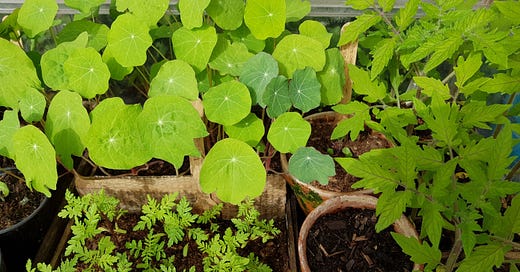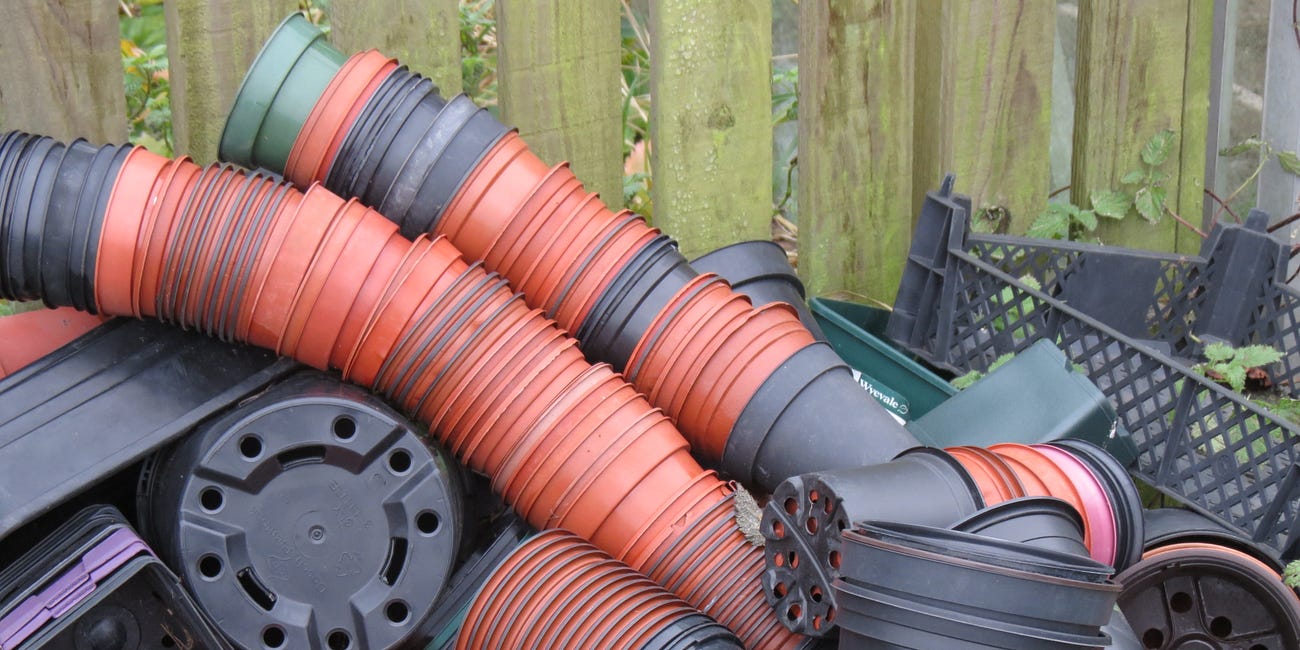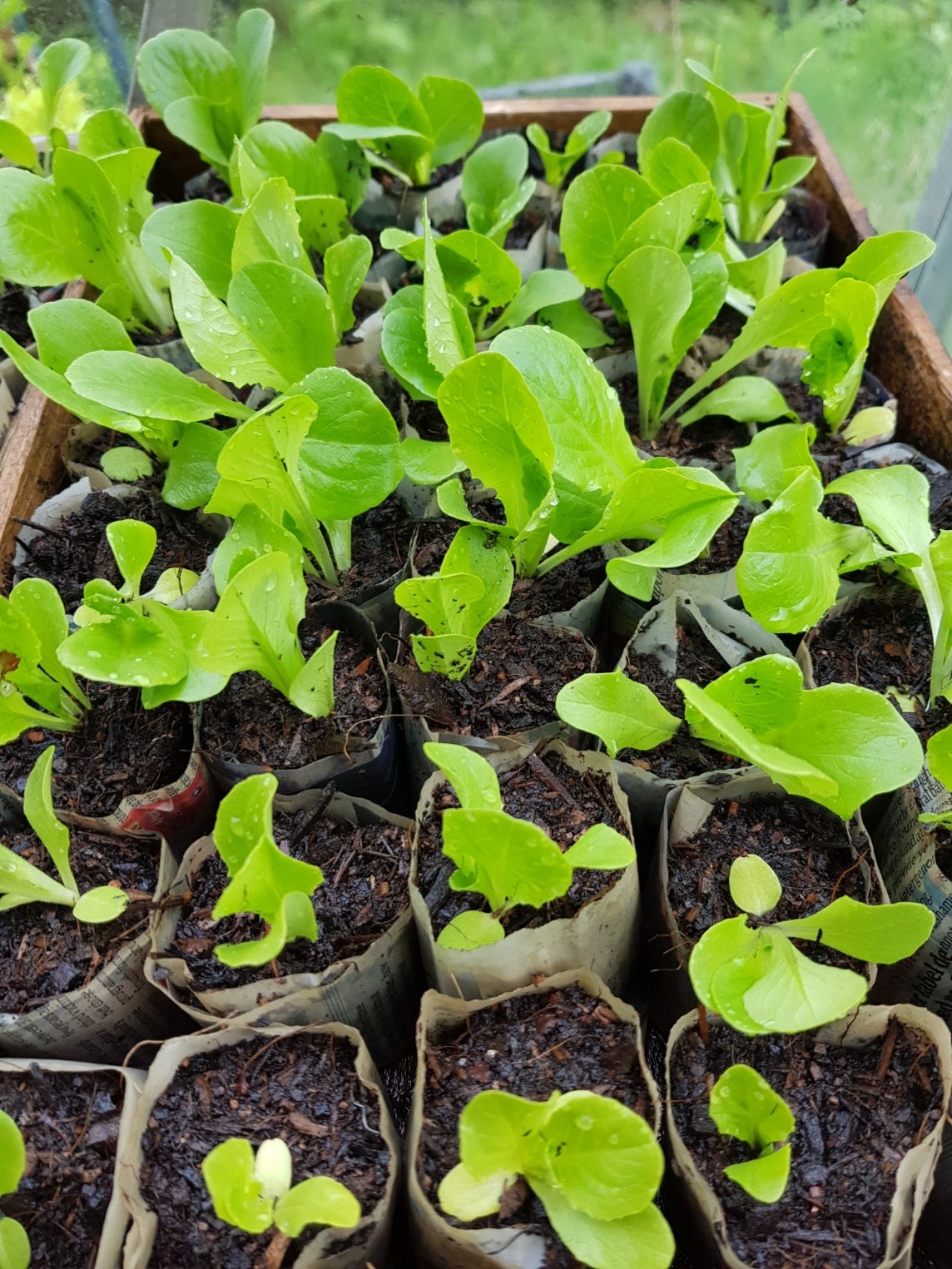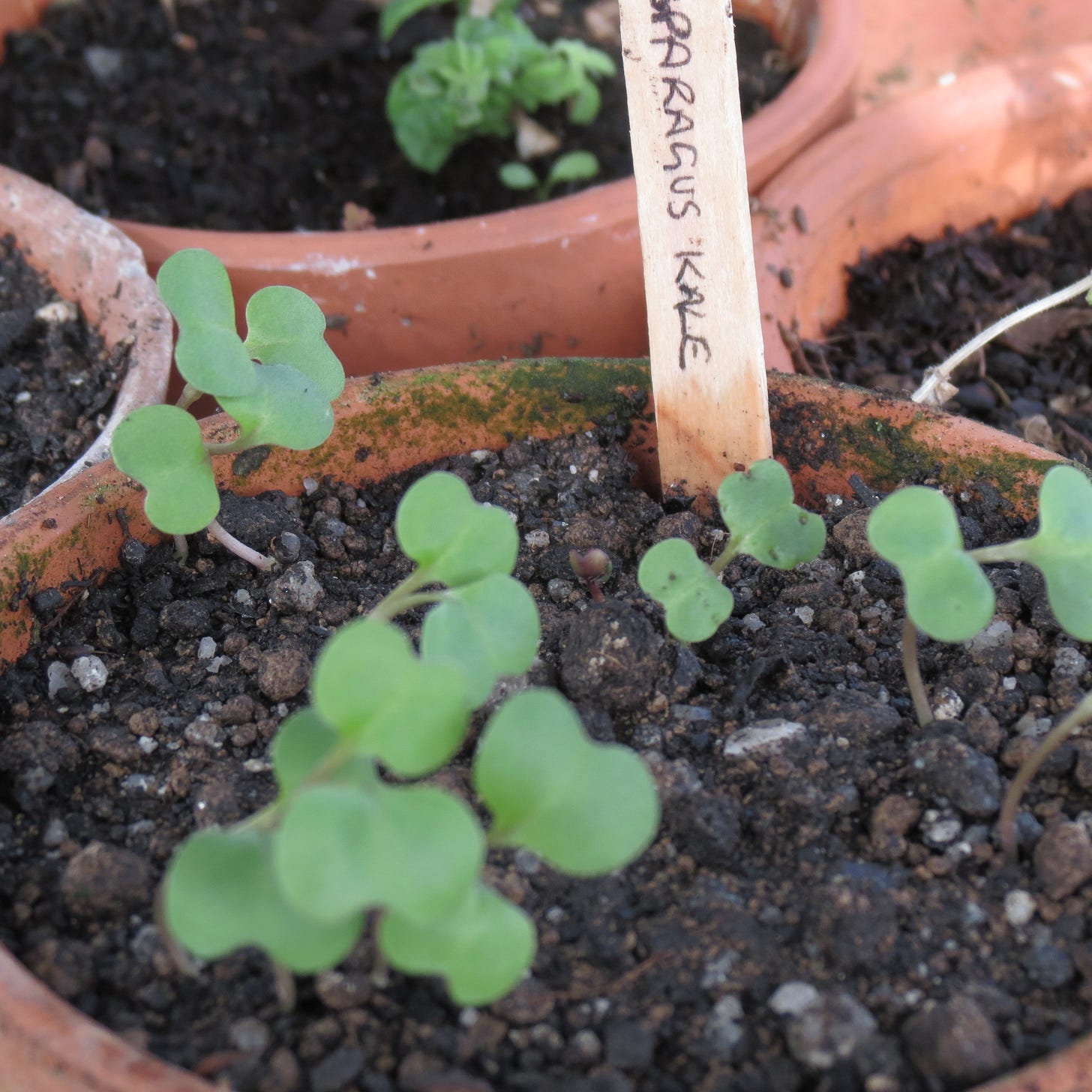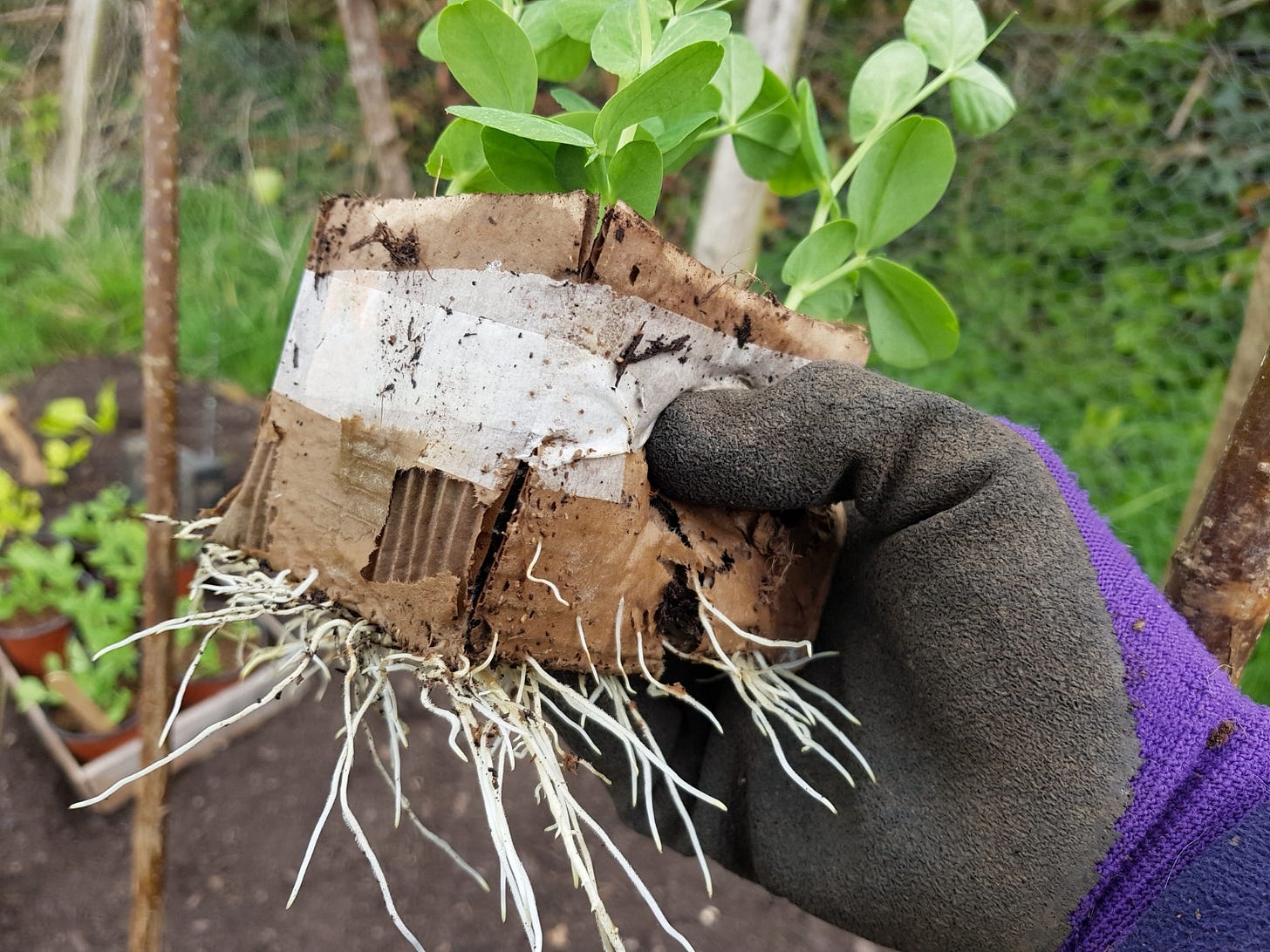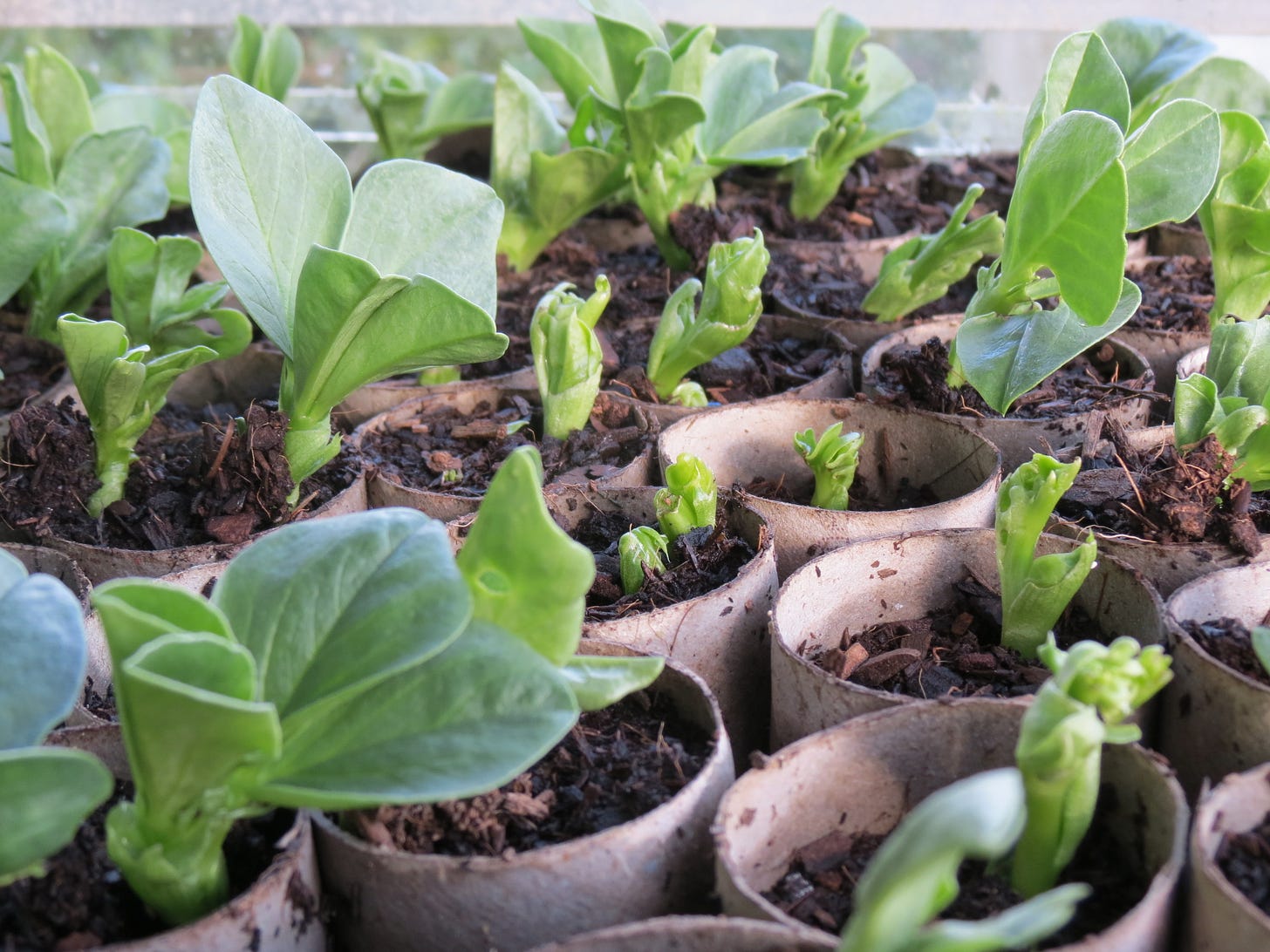What to sow where, and in what
Since we’re in the thick of it, seed sowing wise, I thought it might be a good opportunity to run through which seeds go in which pots. It can be a remarkably complicated decision.
After all, you’re faced with a bewildering array of options: do you sow direct into the ground, or under cover? Trays, modules, root trainers, or just pots?
Over the years I have developed a system that uses all of the above, to match each type of seed as closely as possible to the method of sowing that’s going to give me the best results.
All my trays and pots are biodegradable: so I’m also plastic-free from sowing to planting out, and have been for some years now. I’ve found it’s actually giving me better results when I ditch the plastic: if you want to know about this in more detail, may I point you towards this Greenery post I wrote on the subject last year:
Plastic: your plants are better without
We’ve grown plants in plastic pots since the 1960s or thereabouts: and within that half century or so they’ve infiltrated every garden, every shed, every windowsill in the world. In fact so ubiquitous is plastic as a material for plant propagation and potting on you’d think there was no other alternative.
So: you’ve cracked open your packet of seeds, you have a bucket of peat-free seed compost at the ready…. Now what?
Choose to sow direct when you’re sowing hardy veg with long tap roots which don’t like being transplanted – mostly plants in the Apiaceae (carrot) family.
Good for: Carrots, parsnips, parsley, coriander
Method: At this time of year, warm the soil first by covering it with glass barn cloches two weeks in advance. Or - better - wait till April. Then make a drill 1cm (1/2”) deep and water it till it fills: let it drain away, then sow the seeds sparingly along the bottom, aiming to space each seed about 1-2cm (1/2-1”) apart. Cover with a little earth (ideally sieved) and water every day if it’s not raining already.
Choose seed trays when you need large quantities of one type of vegetable.
Good for: lettuces, baby-leaf salads, nasturtiums, marigolds
Method: Line a wooden seed tray with a sheet of newspaper, then fill with good quality peat-free seed compost (for more about sustainable seed compost: read this post) Water and allow to drain. Scatter seeds sparingly across the surface, then sieve more compost over the top to cover.
One other little tip: if a whole seed tray is going to give you rather too many plants, divide the tray up using a piece of cardboard and sow a different type of seed into each half.
Choose newspaper modules for seeds you can handle fairly easily, veg which dislike root disturbance, and for cluster sowing.
Good for: beetroot, turnips, leeks, annual herbs like parsley, spring onions.
Method: Roll newspaper strips round a 5cm diameter paper potter or straight sided shot glass, fold the surplus over the base and crush flat to make a module. Once you’ve got a trayful, fill each module with compost, water, then sow a pinch of seed on top. Cover with more compost.
If you’re not sure what cluster sowing is: you basically sow a pinch of seed (no more than 4-5) in each module and raise them as a cluster of seedlings you then plant out. You harvest the largest from each cluster; the idea is you get a longer season of harvesting. In my experience it works best for spring onions and beetroot; not so great for leeks, which are a bit weedy grown like this. I’ll try to write a post about this at some point as it’s a bit nerdy but worth experimenting with.
Choose clay pots when you don’t need many plants
Good for: tall brassicas like kale, tomatoes, melons, cucumbers, courgettes, squash
Method: Fill 10cm (4”) pots with sieved seed or multipurpose compost, water, then space seeds evenly and cover with more compost. Work out how many seeds you need by estimating how many plants you want in total, then adding about 25% on for slugs, poor germination, the dog sitting on your seed trays…. etc etc. So for example, my greenhouse takes 8 tomato plants, so if I want all 8 plants the same variety I’ll sow 10 seeds to the pot.
Choose cardboard pots for large seeds which you can then plant out as a cluster.
Good for: peas, sweet peas
Method: Make your cardboard pots from thin cardboard boxes and paper masking tape (I have just realised I’ve not yet done a post on these handy little pots – what an omission. I will put this on my to-do list right away and with a bit of luck, bring you a video showing you how to do it – it’s easy). Then sow your peas in sets of 5, with the seeds laid out one in the middle and one at each corner like the 5 on a dice (if you’re sowing sweet peas, scatter the seeds across the surface leaving about 2cm (1”) between each). This may seem quite close but peas can snuggle up quite happily. Then once you have seedlings of about 15cm (6”) tall, plant the whole lot out at once – no need to prick out your seedlings – burying the cardboard pot with the seedlings and leaving 15cm (6”) between each potful. This method has worked for me for years, and it’s very time-saving.
Choose loo roll inners for large seeds which need a deep root run.
Good for: All kinds of beans, sweetcorn
Method: Stand cardboard tubes in a seed tray lined with newspaper and fill with home-made or peat-free multipurpose compost. Water well and bury a seed in each, about 2cm below the surface. Once up, plant outside without removing the cardboard; you’ll find the lower half of the loo roll has all but rotted away but don’t worry, this is perfectly normal. We have been conditioned by decades of growing in plastic pots to expect neatly shaped root balls: nature doesn’t do it like that (as you’ll have discovered if you’ve ever dug up a plant out of the ground). Just scoop out the whole messy heap of roots, cardboard and plant with your hand and plant the whole lot just as it is.

